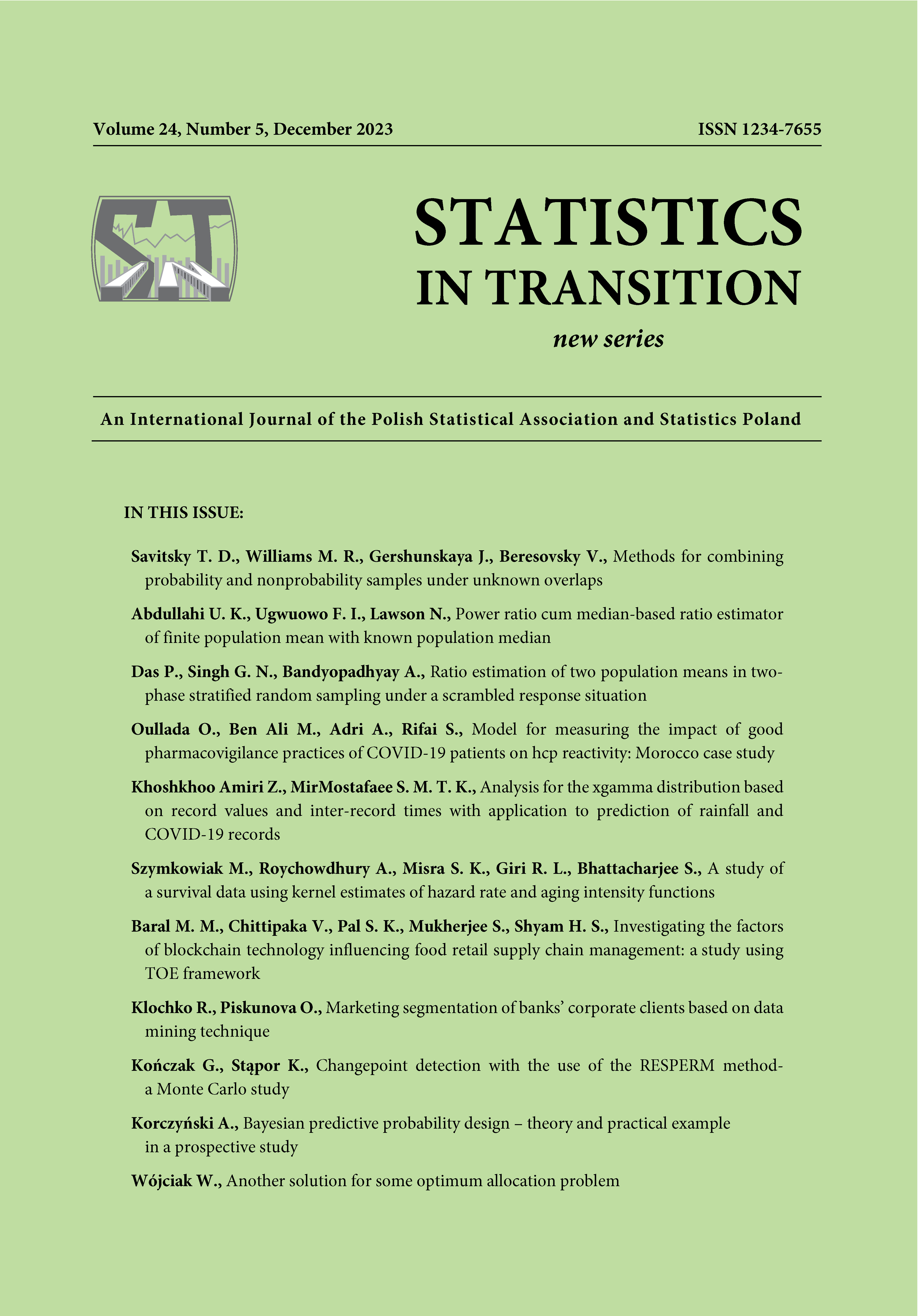ARTICLE
ABSTRACT
In an experiment-based prospective study aiming to determine the efficiency of a treatment, the time by which it becomes clear whether a therapy is effective or not is critical. This applies specifically to clinical trials and refers to the same extent to both successful and futile therapies. This study seeks to answer the question when there is enough evidence allowing the trial to be finalised. The key is to find enough statistical signals, working on the smallest possible sample, to make a judgment whether to extend, continue or terminate the study. The Bayesian predictive design allows drawing conclusions about the prognosis of a study considering the actual results. The article provides a theoretical background and presents a practical perspective, addressing the statistical properties and technical aspects of conducting a trial based on a predictive design. Additionally, the sensitivity of the design to the choice of prior distribution is discussed.
KEYWORDS
Prospective study analysis, adaptive design, predictive probability design, Bayesian statistics.
REFERENCES
Lee, J., Liu, D., (2008, 5). A predictive probability design for phase II cancer clinical trials. Clinical Trials, pp. 93–106.
Little, J. A., Rubin, D., (2002). Statistical Analysis with Missing Data. Hoboken: John Wiley & Sons.
Mittelhammer, R., (2013). Mathematical Statistics for Economics and Business. New York: Springer.
Lesaffre, E., Lawson, A., (2012). Bayesian Biostatistics. Chichester: John Wiley & Sons.
Jóźwiak, J., Podgórski, J., (2009). Statystyka od podstaw. Warszawa: Polskie Wydawnictwo Ekonomiczne.
Bolstad, W., (2007). Introduction to Bayesian Statistics. Hoboken: John Wiley & Sons. Project Data Sphere, (2008, July 21). A Randomized, Open Label Multi-Center Study of XRP6258 at 25 mg/m^2 in Combination With Prednisone Every 3 Weeks Compared to Mitoxantrone in Combination With Prednisone For The Treatment of Hormone Refractory Metastatic Prostate Cancer. Retrieved March 7, 2017, from https://www.projectdatasphere.org/projectdatasphere/html/content/79.
George, S., Wang, X., & Pang, H., (2016). Cancer Clinical Trials. Current and Controversial Issues in Design and Analysis. Boca Raton: CRC Press. Heath, A., Offringa, M., Pechlivanoglou, P., J. D., R., Klassen, T., Poonai, N., & Pullenayegum, E., (2020). Determining a Bayesian predictive power stopping rule for futility in a non-inferiority trial with binary outcomes. Contemporary Clinical Trials Communications, 18.
Zhou, X., Liu, S., Kim, E., Herbst, R., & Lee, J., (2008). Bayesian adaptive design for targeted therapy development in lung cancer--a step toward personalized medicine. Clinical Trials, 5(3), pp. 181–193.
Mitchell, P., (2018). A Bayesian single-arm design using predictive probability monitoring. Biom Biostat Int J., 7(4), pp. 299–309.
Barker, A., Sigman, C., Kelloff, G., Hylton, N., Berry, D., & Esserman, L., (2009). I-SPY 2: an adaptive breast cancer trial design in the setting of neoadjuvant chemotherapy. Clin Pharmacol Ther., 86(1), pp. 97–100.
Simon, R., Geyer, S., Subramanian, J., & Roychowdhury, S., (2016). The Bayesian basket design for genomic variant-driven phase II trials. Semin Oncol., 43(1), pp. 13–18.
Chen, M., Ibrahim, J. G., Lam, P., Yu, A., & Zhang, Y., (2011). Bayesian Design of Noninferiority Trials for Medical Devices Using Historical Data. Biometrics, 67(3), pp. 1163–1170.
Yin, F., Chen, N., & Lee, J., (2012). Phase II trial design with Bayesian adaptive randomization and predictive probability. Journal of the Royal Statistical Society. Series C (Applied Statistics), 61(2), pp. 219–235.
Harrington, D., Parmigiani, G., (2016). I-SPY 2 — A Glimpse of the Future of Phase 2 Drug Development? The New England Journal of Medicine, 375(1), pp. 7–9.
Chen, D., Schell, M., W. J., F., Pettersson, F., Kim, S., J. E., G., & E.B., H., (2019). Application of Bayesian predictive probability for interim futility analysis in singlearm phase II trial. Transl Cancer Res., 8, pp. 404–420.
